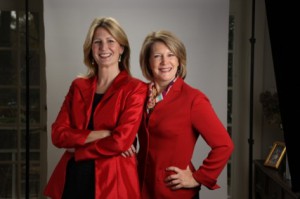No Time for Planned Giving? Try These Quick Ideas!
I’m as fired up as I can get about something big these days: planned giving.
I know, I know — you’ve heard it before. “Jump on planned giving,” the consultants say.
“I can’t,” you say back. “I don’t have the bandwidth.”
Okay, I get that.
But the returns on your investment of time and energy can be simply amazing!
Receive expert advice. Direct to your inbox. Subscribe
That’s where the profit is, says my friend and mentor Penelope Burk.
Ironically, though, it always gets shoved to the bottom of the pile — after the fundraising events, mailing campaigns, sponsorships, grant applications, you name it.
In spite of the great potential payoff, we never seem to get around to planned giving.
Why?
It’s so technical, all my friends say. We don’t know anything about it. And it’s a bit weird bringing up the subject.
I’m not buyin’.
Here’s the truth: I don’t know a lot about the technical end of planned giving either. And I don’t need to know it.
But I do know this: I know who the best planned giving prospects are. And I know what to do with them.
Find out how we can help you achieve your fundraising goals with world-class consulting and custom training.
And that’s all YOU need to know too.
So here’s a quick and dirty plan you can implement right now. And I can’t imagine a greater return on your effort!
1. Identify Your Best Prospects 
Your best prospects are — no surprise here — your most loyal donors over time.They are the most consistent, most non-demanding, perhaps the most silent donors you have.
If you have someone who’s giving your organization $25 for 20 or 20 years straight, you can bet that your cause is in their will.
In fact, many surprise estate gifts come in from those small donors who are ignored by the development staff in favor of bigger donors.
And it’s the long term donor who will leave a major gift as a legacy.
As Target Analytics says, “Loyal giving behavior frequently trumps gift size as a predictor of planned giving.”
2. Communicate With Them Annually.
Simply communicate with your most loyal donors at least once a year, reminding them about estate gifts. “You can leave your legacy to our cause.”
I’m actually not even sure about the word “legacy.”
Don’t by all means, remind them of their mortality with things like “when you’re gone,” which is dismal and a downer, says communications guru Tom Ahern.
3. Ditch the Jargon.
In your annual letter to your most loving and loyal donors, pitch something called “estate gifts,” not “planned giving.”
People – your donors – don’t know what we mean by “planned giving.”
Don’t throw jargon at them! Throw the words “estate gift,” “leave a bequest.”
4. Add Estate Gift Language to All Your Communications.
Put it in your newsletter, your magazine, your mailings, your annual report.
Add a sentence or two into everything you send out.
Include a return card for people to ask for more information.
Remember the old axiom, make it easy for people to give. That includes a simple reply vehicle!
5. Ask About Donating Their IRA, Tax Free.
Congress keeps extending the Charitable IRA Rollover. This law allows people who are 70 ½ or older to make tax-free gifts of up to $100,000/year from their IRA.
What a wonderful way for your true believers to support you! Don’t be shy about suggesting this.
Just imagine if only one person acted on your suggestion!
Action Items for You Right Now:
RIGHT NOW, pull a list of long term donors.
RIGHT NOW, schedule an annual “estate/bequest” letter to them. Put it on the calendar.
RIGHT NOW, create two lines about estate gifts to add to all your communications.
You’ll be glad you did!
And here’s one more action item
Consider joining me on August 28 for a closer look at the ways you can pick the low-hanging fruit off the planned giving tree. I’ll be talking with my friend Claire Meyerhoff, an expert in planned giving marketing. (And yes, it IS all about getting the word out about the things you’re already doing in your PG program.)
We’ll be talking about the easy things you can do now to bring in more money through your planned giving program.
In the meantime, how about sharing your experience with planned giving? How did you make it work? What were your successes?
Leave a comment and let us all know!





